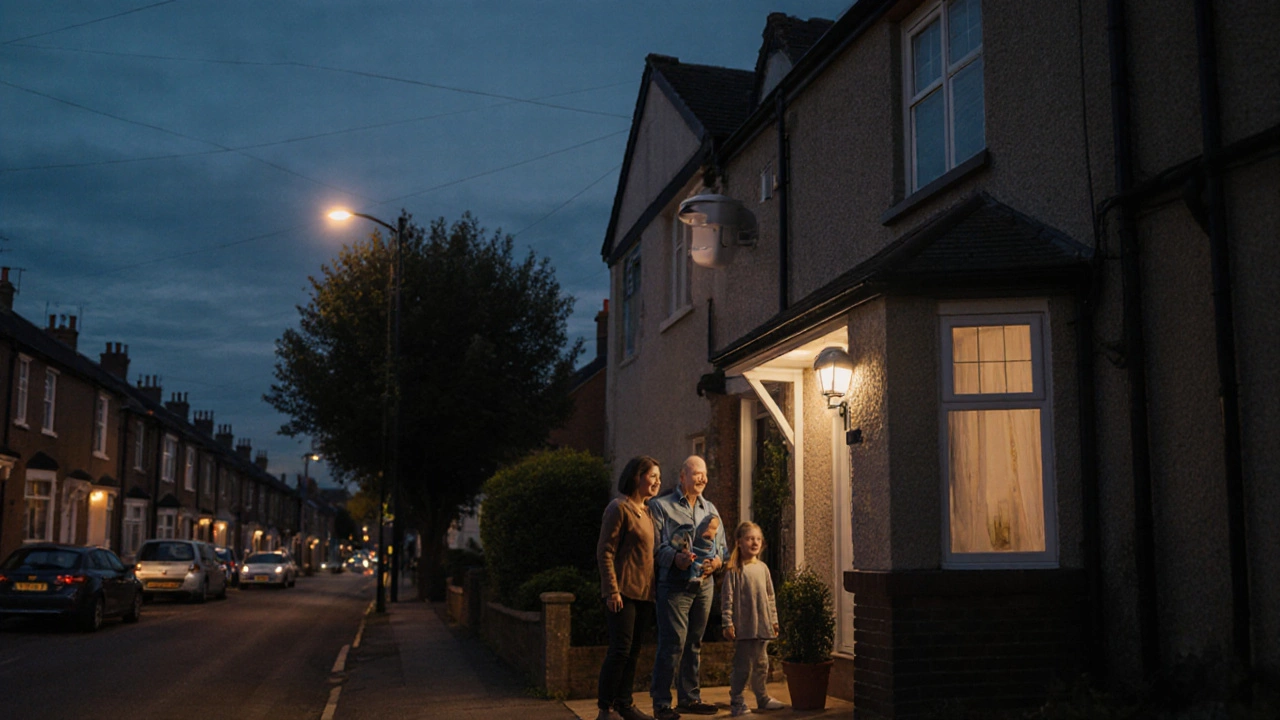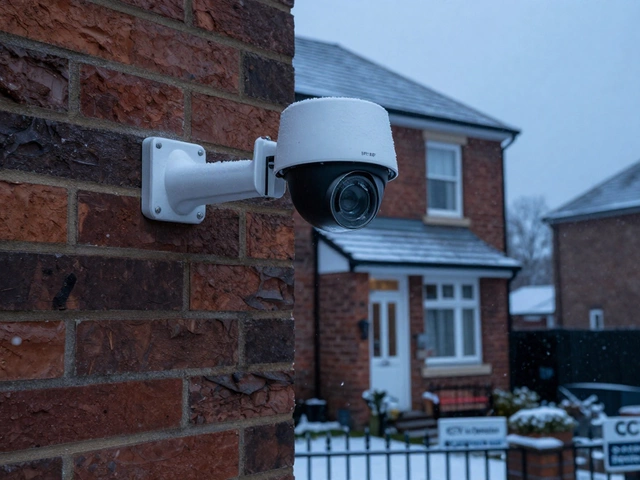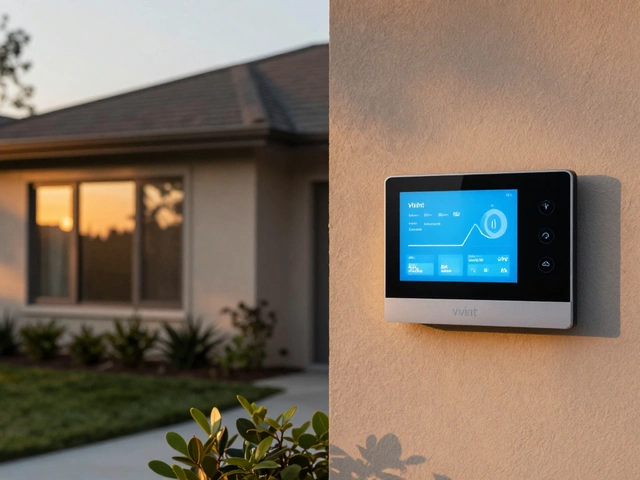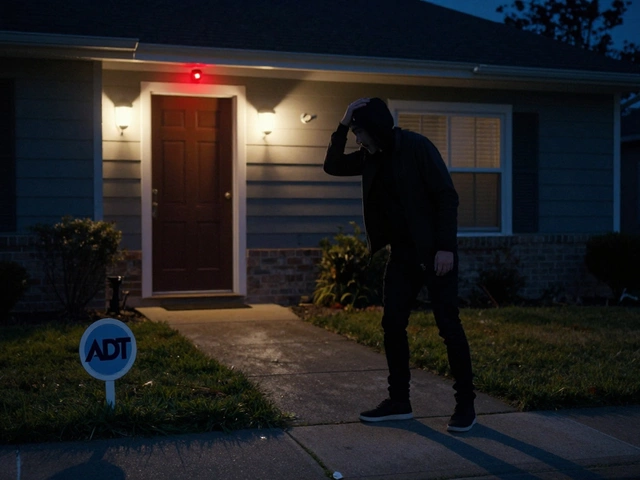Home Security ROI Calculator
Calculate Your Home Security ROI
Determine if your security system investment makes financial sense based on your unique situation.
Key Results
Expected Annual Saved Loss: £0
Net Investment: £0
Annual ROI: £0
Recommendation
When you wonder home security system is a network of sensors, cameras and monitoring services designed to protect your house from intruders, fire or floods, the answer depends on costs, benefits, and your lifestyle.
Why people consider a home security system
Crime rates in many UK towns have shown a modest decline over the past decade, yet the fear of a break‑in remains high. A survey by the Home Security Association in 2024 found that 68% of homeowners felt safer knowing a system was installed, even if it never rang an alarm. Beyond peace of mind, insurers often hand out discounts - typically 5-15% off the premium - when you can prove you have a monitored system. Those savings can quickly offset the upfront expense.
Another big driver is technology. Modern cameras stream 1080p video to your phone, motion sensors can differentiate a pet from a person, and cloud storage means you can review footage from any device. All of that was science‑fiction a few years ago, but today it’s as easy as plugging a plug‑in monitor into a Wi‑Fi router.
What you actually get - core components
Before you start adding up numbers, understand the building blocks. Most systems include:
- smart camera - records video, often with night vision and two‑way audio.
- motion sensor - detects movement and can trigger lights or alerts.
- glass break sensor - listens for the frequency of shattering glass.
- Control panel or hub - the brain that lets you arm/disarm and talk to the monitoring center.
- Key‑fob or app - the way you interact with the system daily.
Some packages also bundle door/window contacts, flood detectors, or smoke alarms. The exact mix determines both price and how well you cover entry points.
DIY vs professional monitoring - a side‑by‑side look
Two main paths exist: you either buy a DIY alarm kit and manage it yourself, or you pay for professional monitoring that alerts police, fire services or a private response team when an alarm sounds.
| Feature | DIY Alarm Kit | Professional Monitoring |
|---|---|---|
| Upfront cost | £150‑£300 (hardware only) | £200‑£500 (hardware + installation) |
| Monthly fee | £0‑£10 (optional cloud storage) | £25‑£45 (24/7 monitoring) |
| Installation | Self‑install, ~2hours | Professional setup, 1‑2days |
| Response time | Depends on you checking alerts | 30‑90seconds to emergency services |
| Insurance discount | 5‑10% (if listed) | 10‑15% (often higher) |
| Scalability | Easy add‑on of sensors | Often requires service upgrade |
Brands like ADT and SimpliSafe dominate the professional side, while Ring Alarm and Nest Secure cater to the DIY crowd. Your choice often hinges on how much you value convenience versus cost.
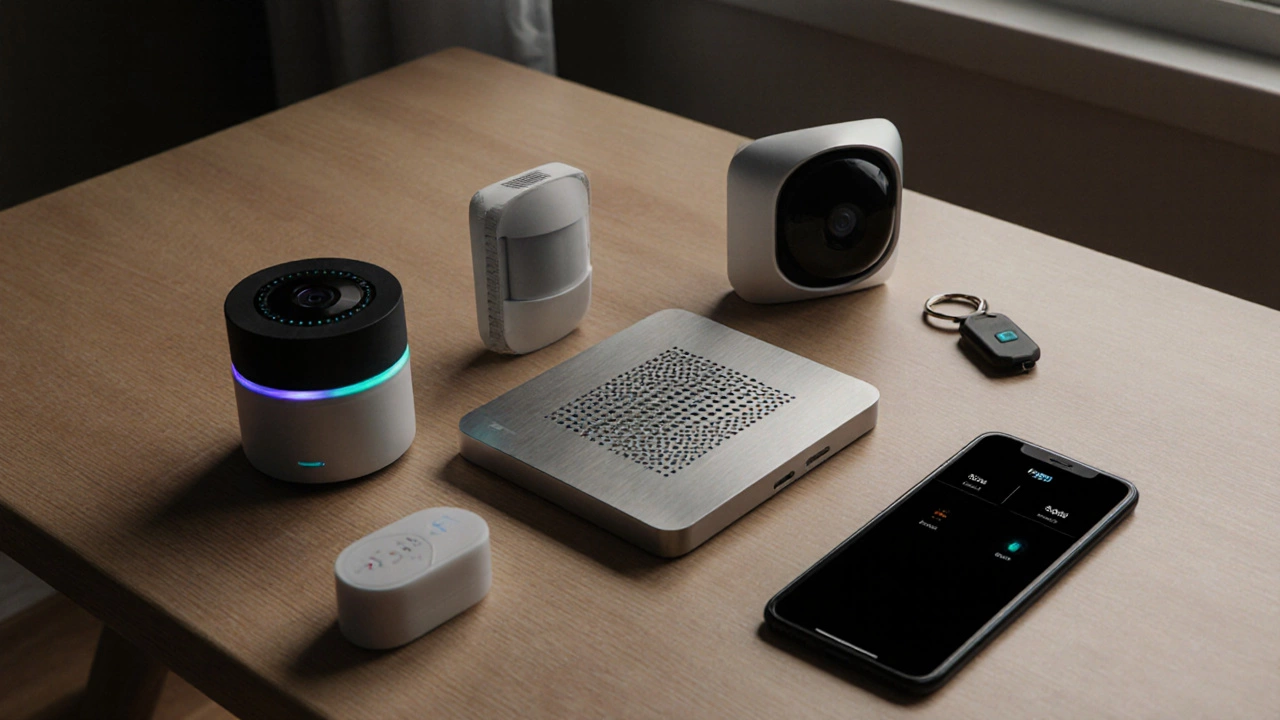
How to calculate the return on investment
ROI isn’t just about stealing prevented - it’s also about avoided loss and lower insurance premiums. Follow these steps:
- Determine total first‑year outlay (hardware + installation + first month of monitoring).
- Add yearly insurance discount you expect to receive.
- Estimate the average loss from a burglary in your area - the UK Home Office reports an average of £3,200 in stolen goods and damage.
- Factor in the probability reduction. Studies by the Security Industry Association show systems cut burglary risk by roughly 50%.
- Calculate expected annual saved loss: £3,200 × 0.5 = £1,600.
- Subtract the net cost (outlay minus insurance discount). If you spend £600 in year1 and get a £120 discount, net cost = £480. Compare £1,600 saved vs £480 spent - a clear positive ROI.
If the numbers flip, you might still choose a system for peace of mind, but at least you have a factual basis.
Common pitfalls and how to avoid them
- Over‑crowding sensors. Installing a motion detector in a hallway with a TV can cause false alarms. Test placements during daylight before finalizing.
- Neglecting battery life. Many wireless devices run on AA or lithium batteries. Set a calendar reminder to replace them every 12‑18 months.
- Weak Wi‑Fi signal. A camera placed at the back garden may drop out if your router is in the kitchen. Use a mesh extender or hard‑wired Ethernet where possible.
- Skipping firmware updates. Vendors release patches for security flaws. Enable automatic updates or check the app monthly.
- Assuming a cheap system = low risk. Low‑cost kits may use unencrypted video streams, making them vulnerable to hacks. Look for AES‑256 encryption and two‑factor login.
Choosing the right solution for your home
Ask yourself these three questions:
- Do I travel often? Frequent travelers benefit from remote live‑view and professional monitoring that can react when you’re not home.
- Do I have renters or pets? Pet‑friendly motion sensors and adjustable entry‑delay timers prevent false alarms.
- What’s my budget for the first year? If you’re under £500, a DIY kit with optional cloud backup often offers the best bang for the buck.
For a typical Sheffield terraced house (three‑bedroom, front and back doors, garden), a balanced setup might look like:
- One smart camera covering the front door.
- One motion sensor in the living‑room.
- Door/window contacts on every entry point.
- Professional monitoring for the first year to lock in the insurance discount, then switch to self‑monitoring if you’re comfortable.
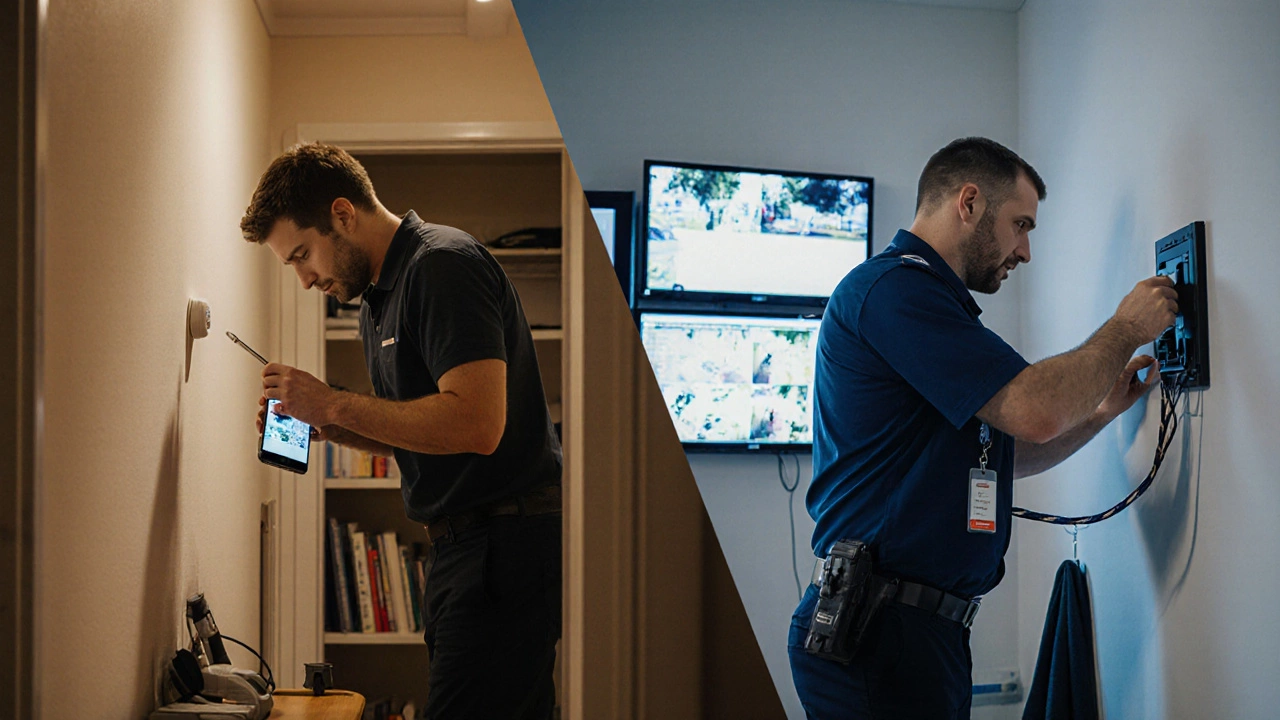
Quick checklist before you decide
- Identify critical entry points (doors, windows, garage).
- Choose between DIY and professional based on response‑time needs.
- Calculate total first‑year cost vs expected insurance discount.
- Check that the system integrates with any existing smart‑home hub (e.g., Google Home, Amazon Alexa).
- Read recent customer reviews for reliability and support quality.
Bottom line
Whether a home security system is worth it depends on your risk profile, budget, and how much you value instant emergency response. In most cases, the combination of reduced burglary odds, potential insurance savings, and the comfort of knowing you can check your home from a phone tip the scales toward a positive return. If you start small with a DIY kit and upgrade to professional monitoring as your confidence grows, you get the best of both worlds without overspending.
Frequently Asked Questions
Do I need a contract for professional monitoring?
Most providers offer month‑to‑month plans, but discounts are often tied to a 12‑month commitment. Read the fine print before signing.
Can I keep my existing smart devices after adding a security system?
Yes - most modern hubs support third‑party integrations via Zigbee, Z‑Wave, or Wi‑Fi. Just verify compatibility on the vendor’s website.
How much can I realistically save on home insurance?
Discounts vary by insurer, but a typical range is 5‑15% of the annual premium. Contact your provider for an exact quote.
What’s the best way to avoid false alarms with pets?
Choose motion sensors with pet‑immunity settings (usually up to 12kg). Position them high enough that only humans trigger the beam.
Is a wireless system as reliable as a wired one?
Wireless systems have improved dramatically; the key is strong, encrypted communication and backup power for the hub.

